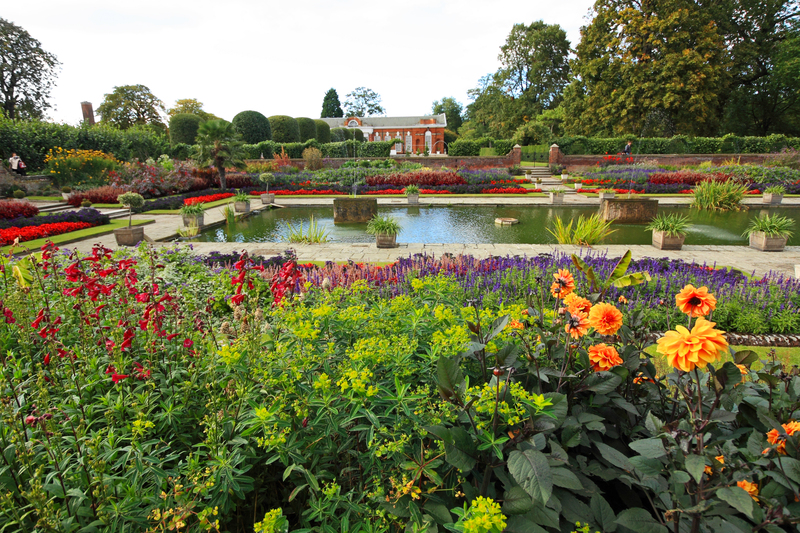Nurturing Nature: Gardens as Climate Allies
Posted on 03/10/2025
Nurturing Nature: Gardens as Climate Allies
In a world grappling with the consequences of climate change, gardens are emerging as powerful, underestimated allies. While the concept of using green spaces to benefit the environment isn't new, the strategic role of gardens in mitigating climate change is gaining renewed appreciation. Whether you're tending to a backyard vegetable plot or transforming urban rooftops into oases, nurturing nature can profoundly impact both local ecosystems and the global climate.
Understanding Gardens as Climate Allies
Gardens have always been cherished for their beauty and tranquility, but their potential as climate solutions is still underrecognized. By acting as tangible buffers against environmental harm, gardens play a crucial part in the fight against climate change. Their roles are multifaceted: gardens sequester carbon, increase biodiversity, manage water sustainably, and regulate urban temperatures.
The Environmental Impact of Gardens
- Carbon Sequestration: Plants absorb carbon dioxide through photosynthesis, helping to counteract greenhouse gas emissions.
- Biodiversity Support: Diverse gardens provide habitats and food for pollinators, birds, and beneficial insects.
- Urban Heat Island Mitigation: Gardens cool cities, reducing the need for energy-intensive air conditioning.
- Stormwater Management: Green spaces absorb rainfall, minimize flooding, and filter pollutants.

How Gardens Combat Climate Change
The climate-friendly garden is much more than a collection of plants. It's a dynamic ecosystem that, when managed mindfully, contributes to rebalancing our planet's climate. Here's how nurturing green spaces actively makes a difference:
1. Removing Carbon from the Atmosphere
Through the process of photosynthesis, plants draw in atmospheric carbon dioxide, storing it in their leaves, stems, roots, and surrounding soil. This process, called carbon sequestration, transforms each garden into a mini carbon sink. Native trees, permanent shrubs, and deep-rooted perennials are especially effective.
- Composting amplifies the soil's carbon storage abilities by returning organic matter to the earth.
- Extending garden beds, reducing the size of your lawn, and planting more trees all increase your garden's overall carbon capture.
2. Fostering Biodiversity and Resilient Ecosystems
Biodiversity is critical for healthy, resilient ecosystems. By planting a variety of native plants, flowering species, and food crops, you create habitats for wildlife, from bees and butterflies to songbirds and beneficial soil microbes.
Biodiverse gardens are more resilient against climate extremes, pests, and diseases, ensuring that their positive climate impacts endure over time.
3. Mitigating Urban Heat Islands
Hard surfaces like concrete and asphalt absorb and retain heat, exacerbating "urban heat island" effects. Gardens and green roofs lower surrounding temperatures through shade and the cooling effect of transpiration--the release of water vapor by plants into the air.
- Pocket parks, rooftop gardens, and tree-lined streets can significantly reduce heat-related health risks in cities.
4. Improving Water Management
Healthy gardens play a pivotal role in stormwater management. By capturing rainwater, slowing runoff, and filtering pollutants before they enter waterways, gardens can help prevent flooding and erosion.
- Rain gardens and permeable landscaping allow water to percolate into the soil, replenishing aquifers and supporting drought resilience.
5. Reducing Food Miles Through Edible Gardens
Growing your own food cuts down the "food miles" associated with transporting produce over long distances. By cultivating herbs, fruits, and vegetables at home, you reduce emissions linked to industrial agriculture, packaging, and shipping. Plus, homegrown food is fresher and more nutritious.
Maximizing Your Garden's Climate Impact
Any garden, regardless of scale, can contribute to climate resilience and ecological health. Here's how to optimize your green haven to better serve as a climate ally:
Choose Climate-Smart Plants
- Native and drought-tolerant species are best suited to your local environment, needing less water and fertilizer.
- Trees and woody perennials store more carbon and provide year-round habitat and shade.
- Plant a mix of flowering plants for continuous blooms and pollinator support.
Prioritize Soil Health
Healthy soil is the foundation of any climate-friendly garden. Living soils store carbon, filter water, and cycle nutrients naturally.
- Add organic matter routinely via mulch and compost.
- Avoid synthetic fertilizers and pesticides, which degrade biodiversity.
- Practice no-dig gardening to protect soil structure and support beneficial microbes.
Encourage Wildlife and Pollinators
- Install birdhouses, bee hotels, and water features to create havens for wildlife.
- Let some areas "go wild" to support insects and ground-nesting animals.
- Limit or avoid chemical use for a safer, more hospitable habitat.
Minimize Resource Inputs
- Water wisely by using rain barrels and choosing drought-resistant plants.
- Mulch generously to reduce evaporation and suppress weeds.
- Reuse garden materials and repurpose containers to lower your environmental footprint.
Grow Edibles for Self-Reliance
- Dedicate space for vegetables, herbs, and fruit trees.
- Practice succession planting and companion planting to maximize productivity year-round.
Compost and Recycle Organics
Composting is a simple, effective way to reduce landfill waste while building your garden's carbon sink properties. Organic waste turned into compost boosts soil life and fertility naturally.
The Social and Community Value of Climate-Resilient Gardens
Besides their environmental benefits, climate-friendly gardens enrich communities by fostering connection, learning, and well-being. Community gardens, schoolyard plots, rooftop farms, and public parks all play a pivotal role in forging resilient, informed, and healthier societies.
- Educational opportunities: Gardens become living classrooms, teaching children and adults about ecology, conservation, and sustainable food production.
- Health and wellness: Spending time in gardens reduces stress, encourages physical activity, and improves nutrition.
- Social cohesion: Collaborative green spaces unite neighborhoods in shared environmental stewardship.
Urban Gardens: Greening Cityscapes for a Cooler Future
Urbanization is on the rise, intensifying our cities' vulnerabilities to climate impacts. Urban gardens--including community plots, balcony gardens, vertical walls, and green roofs--offer scalable solutions to make cities more livable and climate-smart.
- Rooftop gardens can lower building energy costs by insulating interiors and reducing heat absorption.
- Parklets and tree plantings in neighborhoods cool streets and improve air quality.
- Urban farms supply fresh, local food while fostering ecological literacy among city dwellers.
Case Study: Singapore's Garden City Vision
Singapore exemplifies how integrating greenery into urban infrastructure yields vast climate and quality-of-life benefits. Vertical gardens envelop high-rises, leafy park connectors crisscross the city, and rooftop spaces support both biodiversity and food production. This approach demonstrates that prioritizing green spaces is a win-win for both climate resilience and urban vitality.
Engaging with Climate Action Through Gardening
Anyone can be a steward of nature, regardless of their gardening experience or available space. By embedding climate-smart practices in our private and community gardens, we contribute to planetary health and inspire others.
- Start small--even a windowsill herb box or potted tomato contributes to local biodiversity and reduces your food footprint.
- Share your success--swap seeds, plants, and ideas with neighbors to multiply positive impacts.
- Advocate for green city policies, more public parks, and school gardens to expand nature's reach in your community.

The Future of Climate-Responsible Gardening
The science is clear: gardens can--and must--be part of the solution to our most pressing environmental crises. Future trends will see:
- Deeper integration of garden design with sustainable landscaping and ecological restoration.
- Innovative technologies, such as moisture sensors and climate-resilient plant breeds, making climate action accessible to all.
- Expanding networks of community-supported agriculture and edible landscaping in urban and suburban areas.
If everyone tended to a patch of earth--no matter the size--with the goal of nurturing nature and supporting the climate, the cumulative effect would be profound.
Conclusion: Growing Hope, One Garden at a Time
Gardens are not a panacea for climate change, but they are powerful tools in the global response--tools available to almost everyone. By transforming how we design, care for, and understand our gardens, we plant seeds of resilience not just for ourselves, but for the planet. The journey to a sustainable future begins at home, in the simple act of nurturing nature.
Let your garden be a climate ally--a place where beauty, biodiversity, and sustainability blossom hand in hand. In doing so, you help rewrite the story of our relationship with the earth, proving that every leaf, flower, and root can be a force for climate action.

